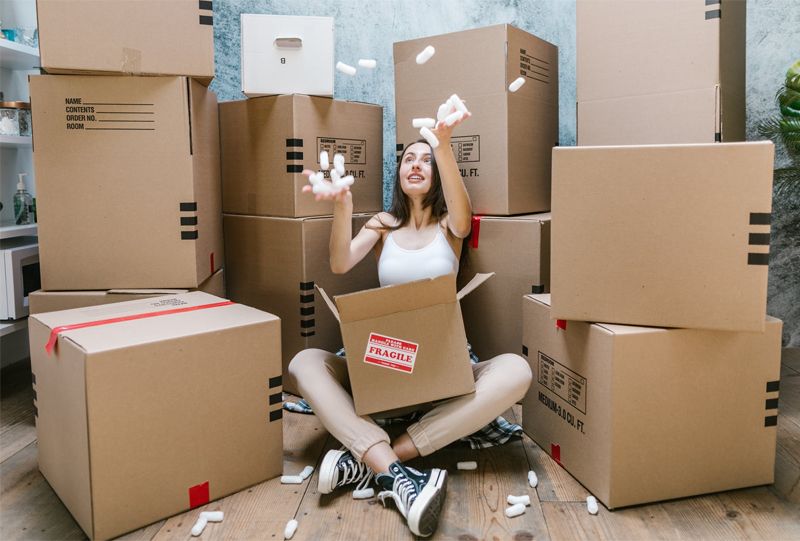Imagine you’re reading a weather report. You see freezing temperatures predicted. All of your cold-weather clothes are stored. You feel the wind whipping and are ready to move to your self-storage unit.
Half of your belongings are now in self-storage. You’re still searching for your boots. Although it sounds horrible, imagine how frustrating you must feel when all of your baking and holiday decorations are stored away.
This is something you don’t want to do, especially if the weather is bad or your timing is poor. Planning ahead is a good idea to avoid having to deal with problems later. These are nine simple tips to help you organize your storage unit and make it easy for you to find what you need.
You can choose one size for all or most of your items
It is easier to stack similar-sized boxes and make them more accessible. Life Storage’s small and medium boxes are great for all belongings. Although large boxes are great for lighter items they might not be strong enough to hold up in large stacks. It can be difficult to lift large boxes, especially from the bottom of stacks.
You should identify what you may need to access while you are in your self-storage
It’s possible to have items that you don’t use as often as you pack. You might not use the items you have stored. Also, consider seasonal items.
These are just a few things you might need out of your storage unit.
- Winter or summer clothing
- Trip supplies (tents, sleeping bags, snorkeling gear, sleds, cookout utensils)
- All holiday products include decor, costumes, and bakeware
- Toys for children (kids may enjoy a “new” box of toys if the toys they have been using are not enough).
- Tools and hobby supplies
- Office documents
Label each box you pack.
Label each box on the top and at most one side. Each label should contain a unique number, the origin of the box, and information about its contents. You can mark boxes you may need in self-storage. You should place these boxes in the storage unit first. Include as much information as possible about the contents.
Create a master content listing.
Notate the contents of each box, along with the number of the boxes on paper. This may seem like a daunting task but a master list is very useful if you need to locate a specific item.
Even better, you can use tools to dictate text so that you don’t have the burden of typing every word. You can also print each line of inventory to make labels for your boxes if you aren’t confident with your handwriting.
It is important to plan an organized layout for your storage space.
If you plan to use your self-storage unit often, you will need to plan how to pack it. Place your furniture opposite the boxes to ensure that it is easily accessible. This will make it easy to access your furniture and boxes. If you need to make the most of that space, you can place your most important items in the middle.
Upgrade to a larger unit.
You could fill every inch like a Tetris master, but it is difficult to retrieve items. You can increase the storage space by installing shelving units. You can also create a path through the middle of your unit for quick access to most of your belongings.
You can also place items on the ground such as wooden or plastic pals to protect your furniture and appliances from spills. Space that you don’t intend to use is not a good idea. Life Storage’s Size Calculator can give you an estimate of how much space you will need.
Stack boxes and shelve them.
If you have a lot of items to store, sturdy shelves can be placed on one wall. If your box is not following these guidelines, you can stack it.
In accordance with your needs, stack from the front to the back. The boxes that you use the most are most likely to be found. These boxes should be near the door or on shelves with labels facing outward.
Then, you can stack lighter boxes on top of heavier boxes. You should not stack boxes higher than your head. Be careful about how high boxes are stacked. You should be careful how high you stack boxes. They can easily fall on your head and injure anyone else using them.
A brick wall pattern is a good option for stacking identical-sized boxes. Although this may seem inefficient because you will have gaps between your stacks, the brick walls pattern can be used to place and remove boxes without the need to move them.
A map showing all of your belongings can be placed in the unit. This will allow everyone to see them.
It doesn’t matter if you mark items or boxes that are easily identifiable. You should still indicate any items that are lost or not easily visible on the map. Knowing the area is enough. It suffices to draw a sketch by hand.
Your unit can be divided into sections and you can list the box numbers and contents in each section on your map. To locate an item or box that is buried behind your storage unit, you can use your master contents list and map.
Don’t be afraid to get rid of all your boxes.
It can save you time later on if you already pack and have many boxes that aren’t labeled. Reuse seasonal items like bakeware and clothes by packing them in their own boxes. You can also choose packers and movers in Bangalore to make the process easy.
Items that fall into one of these categories can be packed. You don’t want boots or coats for snorkeling. You will find it easier to forgive yourself if you take the time to label, organize, and repackage everything.
This five-step process can seem time-consuming, especially if everything already exists in inboxes. They are well worth the effort. You will be able to save time and energy in the future.




